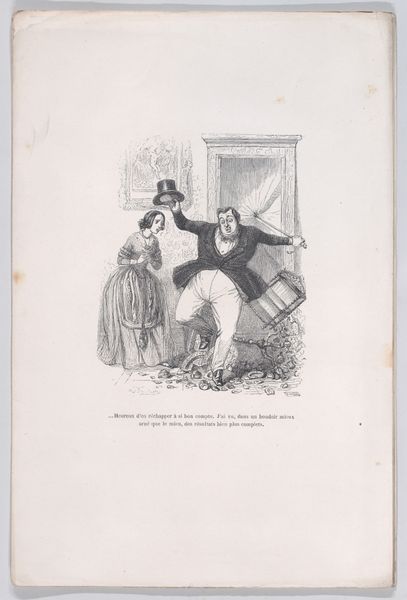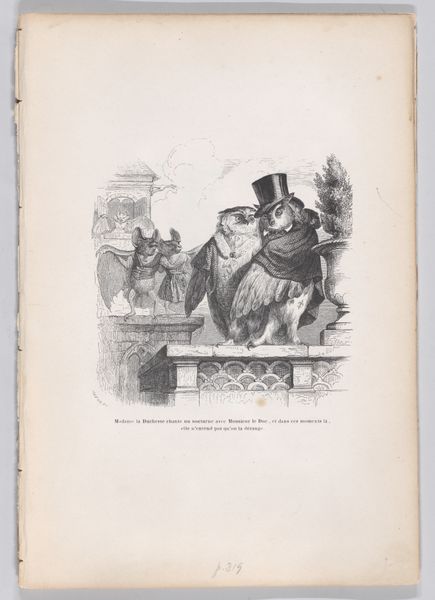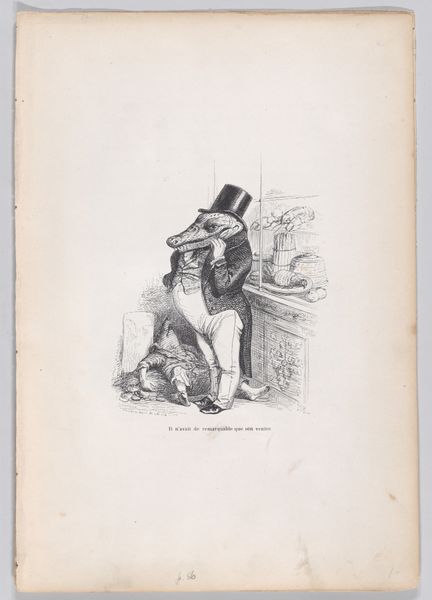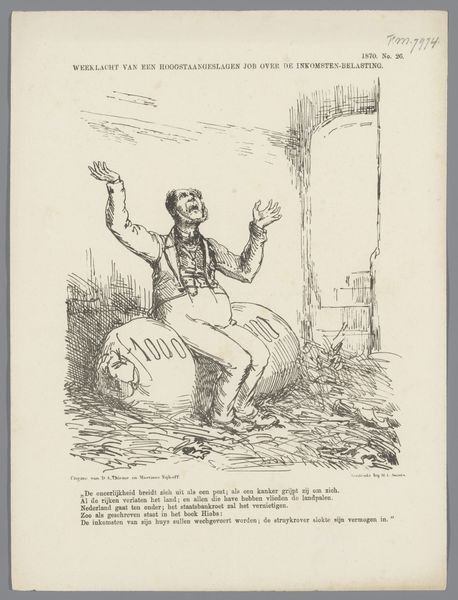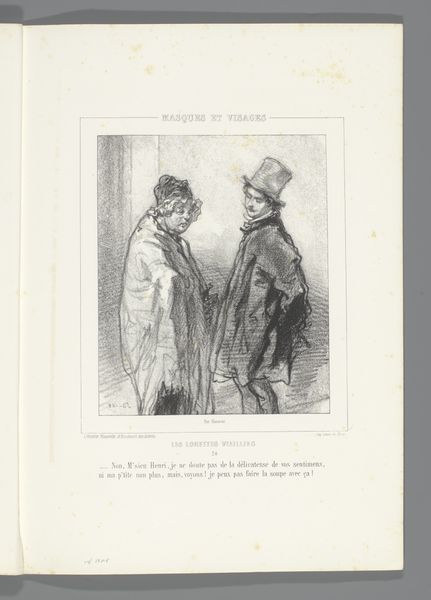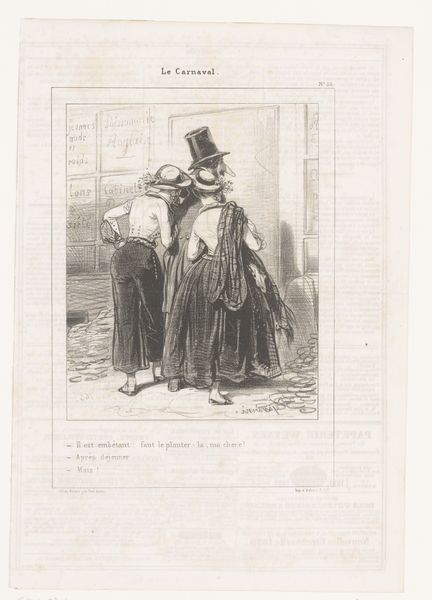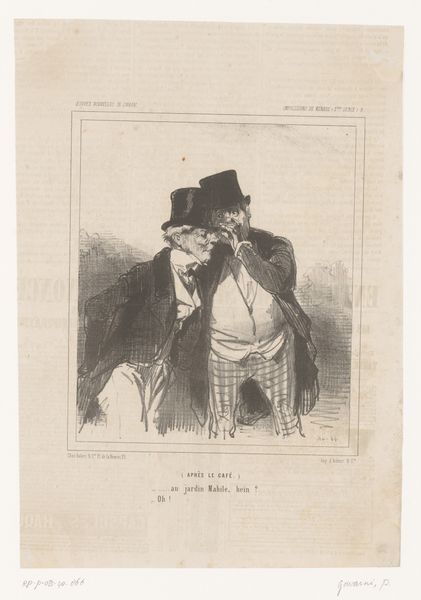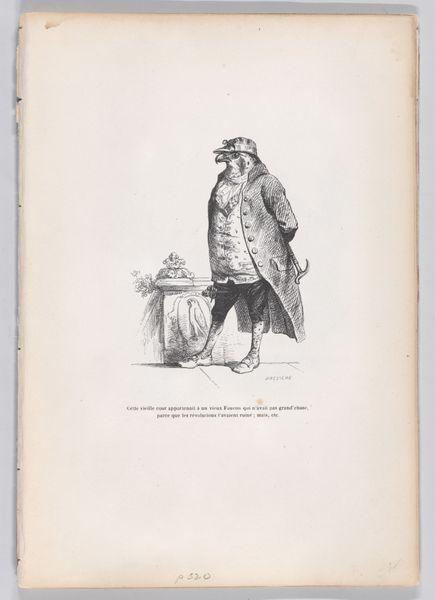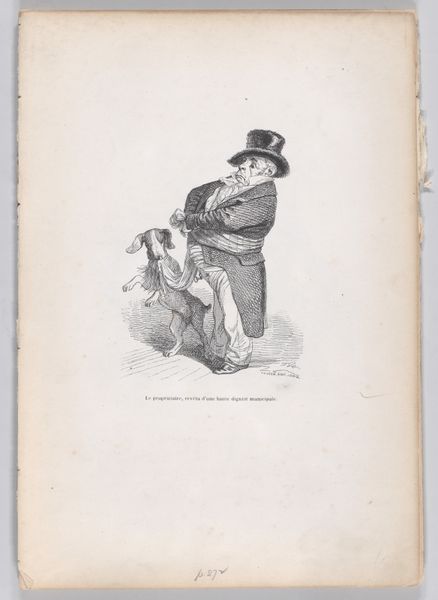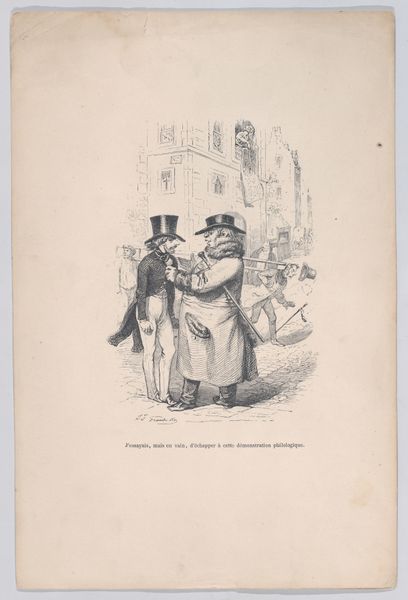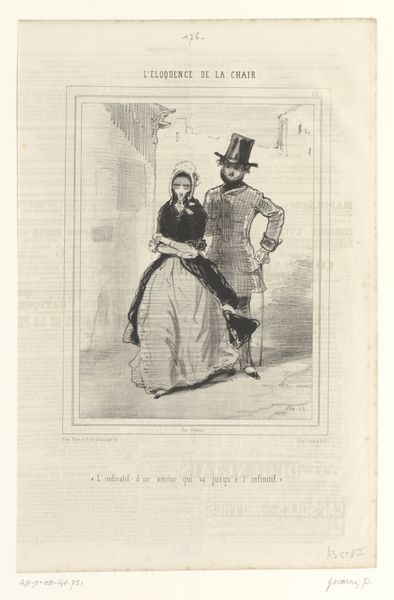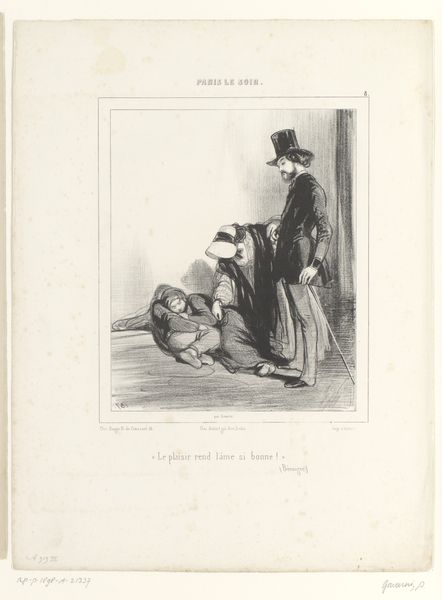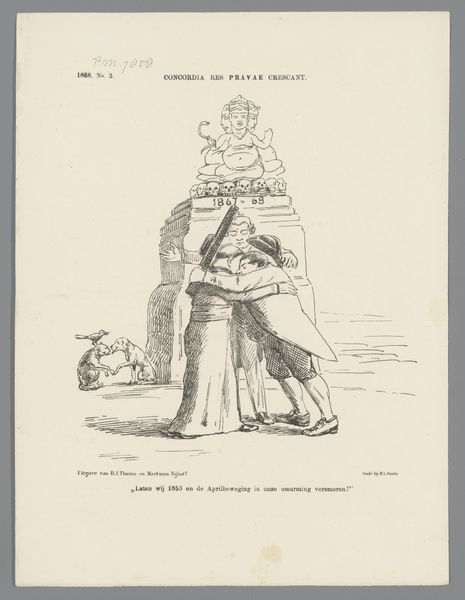
drawing, lithograph, print, etching, pen
#
portrait
#
drawing
#
lithograph
# print
#
etching
#
caricature
#
pen
#
cityscape
#
genre-painting
#
modernism
Dimensions: height 378 mm, width 275 mm
Copyright: Rijks Museum: Open Domain
Curator: Looking at Paul Gavarni's "Kleermaker loopt met pak onder de arm," which roughly translates to "Tailor Walking with a Suit Under His Arm," created around 1853, I’m struck by the poignancy. It appears to be a lithograph, or possibly an etching, given its detailed linework. Editor: Immediately, I see a visual metaphor for labor and burden. The bent figure, the oversized suit—it speaks volumes about the working class. The city, seen hazily in the background, is a silent witness to the tailor's struggles. Curator: It's important to remember Gavarni's engagement with depicting Parisian life. He rose to fame capturing everyday scenes. Here, though, he also subtly critiques the social structures, even ridiculing, through the choice of caricature. Editor: Exactly! Is he being weighed down by expectations or trapped by circumstance? Consider the rigid fence. The text beneath it hints at social commentary— something about a dress coat that’s too large—amplifies this reading. Curator: And it becomes very interesting thinking about gender, dress, and the codes inherent in tailoring. It reflects Gavarni’s world which saw the rising bourgeois and, subsequently, new gender norms appearing. How can dress codes reflect status and identity? Editor: The deliberate sketchiness contributes, too. There’s a sense of urgency, maybe of lives in progress. Think about his other works which focused on street scenes, reflecting the rapid social changes and anxieties of 19th-century urban experience, where rigid expectations were increasingly challenged and renegotiated. Curator: He truly encapsulated a moment in time when identity became linked to labour, class, and fashion, which created new constraints on how bodies were being surveilled and represented. Editor: It encourages reflection about what sustains us, how we carry our burdens, and what we hand down to others in systems that sometimes appear rigged against those performing the work.
Comments
No comments
Be the first to comment and join the conversation on the ultimate creative platform.
